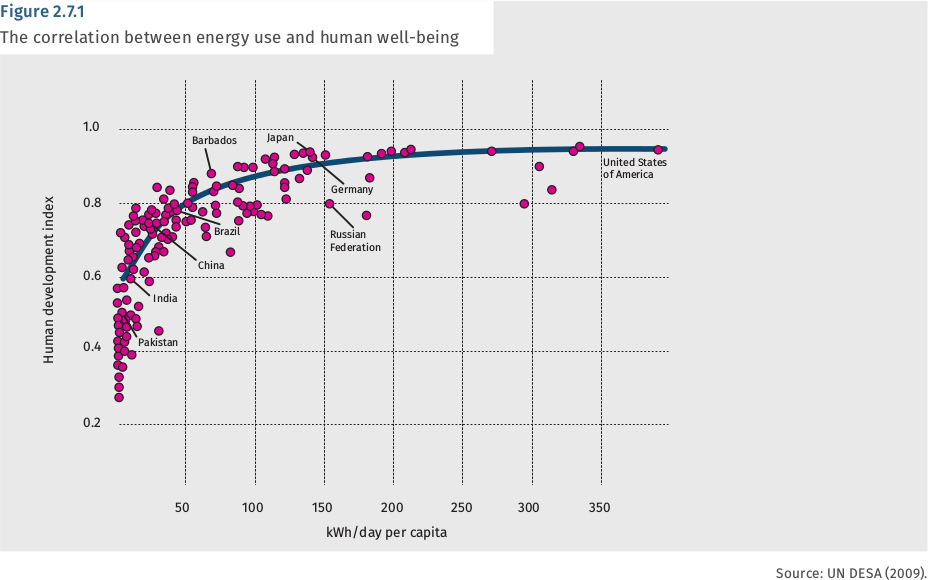By Niclas Hällström, What Next Forum
Energy is a cross-cutting issue that is fundamental to all of the Sustainable Development Goals (SDGs) and central to development, security and climate change challenges. Access to energy underpins all aspects of human well-being, be it health, education, food production, transportation, communication and any productive activity. The dominant energy system based on fossil fuels is of course the paramount sector contributing to climate change, which means that a radical overhaul of the global energy system towards 100 percent renewable energy is urgently required. But efforts to address this need are also highly politically charged in that this fossil-fuel based energy system is heavily centralized with a few concentrated points of extraction and generation controlled by limited number of powerful corporations and states, making it a centrepiece of geopolitical turmoil and tension.
Energy may very well be the largest and most daunting sector to tackle in terms of implementing the SDGs, given the enormous changes that need to take place over a very short time period, the powerful vested interest that are set to defend their profits and, ultimately, societies’ deep-seated obsession with wasteful, high-energy use models of development.
However, energy may also prove to be the key to unlocking transformational change, and a shift towards sustainability, equality and people-centred development. We see the emergence of a ground-swell movement that is likely to escalate and shake global politics and economic structures in the years to come. Civil society, social movements, religious leaders and people across the globe are increasingly demanding that fossil fuels be left in the ground while calling for a renewable energy revolution. Households, communities, cities, civil society organizations (CSOs) and companies at all scales are building this new future by investing in renewable energy here and now. Countries and local governments in both the global South and the global North are beginning to formulate bold goals of achieving 100 percent renewable energy societies.
We are at a crossroads, with the potential to choose the road to the renewable energy futures that are a prerequisite for the fulfillment of all other SDGs. We must, however, realize that this vision goes far beyond simply changing fuel sources while leaving present power structures intact. The renewable energy revolution calls for profound changes in terms of how we use energy, who owns and produces energy, and how it is distributed. A renewable energy future calls for a huge increase in the number of smaller-scale consumers who are also producers, such as homes with rooftop solar panels, wind turbines owned by farmers or community cooperatives, and public institutions such as schools, hospitals and universities as well as commercial enterprises using their roofs and land for solar and wind. This would mean expansion of distributed and decentralized power generation that provides access to those in need and direct benefits to local development, job creation and building resilience. The energy model of the future must be a people-centred one.
Energy access, development and sufficiency
Ensuring energy access is in itself an imperative. Up to a point, increasing access to energy is the most decisive factor for increasing well-being and standards of living - while at higher consumption levels there is no such correlation (see Figure II.7.1).[fn]Cf. Banuri/Hällström (2012). [/fn]

The UN energy statistics are staggering: 1.3 billion people without access to electricity and 2.7 billion mainly relying on traditional biomass for cooking.[fn]Cf. International Energy Agency (2015). [/fn] Even so, these numbers do not convey the reality and conceal an even more bleak situation. Meaningful energy access is not delivered with a theoretical, minimum access to limited energy services for sporadic, short periods of time. Neither should energy access be considered achieved when a community is grid-connected but individual households are not. Energy access does not mean energy is available, but too expensive and thus out of reach for people in poor living conditions. Thus the number of people lacking real access to energy is in fact much larger than the official figures indicate.
The right to sufficient energy is a human right and must be assured and supported by all countries as well as by the global community.
The word ‘sufficient’ is key here. It means that definitions of energy access must be clarified and ramped up in ambition to mean ensuring energy access for all, 24 hours a day and at a scale that allows for both basic and aspirational needs. It is much more than merely provision of, for example, limited household lighting. Energy access as a human right should entail basic essential energy services such as lighting, adequate level of comfort, clean drinking water, clean and adequate cooking energy, transportation and communication needs as well as entertainment – on demand and through the most efficient energy systems and appliances.
Sufficiency also works the other way – recognizing the need to curb excessive consumption of energy by the world’s elites and middle classes. Electricity use is among the starkest indicators of global inequality there is and the numbers are staggering. It is absurd, that an average Swede, for example, consumes over 200 times more electricity than does an average Tanzanian. An average U.S. citizen, in turn, consumes roughly double the amount of energy a European would, without any higher quality of life. [fn]Cf. Friends of the Earth International (2013). [/fn]
The wasteful, overconsuming lifestyles of the richest strata of the world’s population constitute one of the biggest threat to the fulfillment of the SDGs. There is no way the present high levels of energy consumption by the rich can be maintained and constitute everyone else’s aspirational goal.
Over time, therefore, it is necessary for average per capita energy use across countries to converge on a band of ‘responsible well-being’ (taking into consideration variations in local circumstances, such as heating and cooling needs). Unfortunately, this equity dimension of energy access is not recognized in SDG 7, and must be urgently introduced into the public debate, popular movements and policy recommendations.
Energy and climate: 100 percent renewables
Target 7.2, which mandates governments “to increase substantially the share of renewable energy in the global energy mix” by 2030, is disturbingly vague and lacking in concrete ambition, which implies delayed and weak action. From a climate and carbon budget point of view we must recognize that a shift to 100 percent renewable energy must be initiated immediately, with concrete and ambitious targets for the near term. To have an even outside chance of keeping warming below a very dangerous 2°C, not to speak of the slightly less dangerous 1.5°C, requires rich, developed countries to move to 100 percent renewable energy by 2030 with developing countries following suit shortly thereafter.
Climate negotiations and interpretations of the IPCC findings are needlessly convoluted and conceal the urgent reality of what needs to be done. Most climate models so far have included veiled assumptions of ‘negative emissions’ through geo-engineering technologies such as Bioenergy with Carbon Capture and Storage (BECCS) that are not yet proven to work and assume vast land areas in developing countries that do not exist.[fn]Cf. www.nature.com/news/talks-in-the-city-of-light-generate-more-heat-1.19074. [/fn] Using the Intergovernmental Panel on Climate Change (IPCC) carbon budgets for 2011 onwards, the 1,000 Gt CO2 remaining for a 2 in 3 (extremely risky) probability to keep below 2°C leaves less than 650 Gt CO2 for future energy use (after subtracting emissions since 2011 and unavoidable emissions from forests, agriculture and cement production).[fn]Cf. Nature Geoscience http://rdcu.be/eoQY. [/fn] This means that less than 15 years of current emissions level globally remains; for 1.5°C there is hardly any budget left.[fn]Cf. www.carbonbrief.org/analysis-only-five-years-left-before-one-point-five-c-budget-is-blown. [/fn]
The conclusion is crystal clear: we are already on overtime and there is no time to wait. Rich countries must embark on the most radical transformation conceivable of their entire energy systems, including an immediate stop to all fossil fuel investments and early retirement of existing fossil fuel power plants. They must immediately boost investments in renewable energy and set up bold, ambitious incentives schemes such as feed-in tariffs that enable and guarantee all actors – from households to cooperatives to farmers to municipalities, utilities and companies – to invest in renewable energy immediately. And they must recognize that such a renewable energy revolution would still takes years to implement, and that immediate behaviour changes, usage bans and regulations are also crucial in order to avoid catastrophic climate change.
For developing countries, the goal must be the same – achieving 100 percent renewable energy systems as quickly as possible. This means changing priorities and mindsets from old, dirty and backward centralized models based on large fossil fuel installations, to modern, distributed and intelligent renewable energy systems that can flourish wherever there are communities. Such systems can directly serve both productive sectors and industries and people wherever they live. This leap-frogging must be led and initiated by developing countries themselves, but massively supported and enabled by rich, developed countries in line with their long-standing obligations to provide finance, technology and capacity-building to enable climate-friendly development trajectories. Indeed, this is exactly what is now happening though the Africa Renewable Energy Initiative (AREI) (see Figure II.7.2).

How to boost renewable energy investments?
A transformation towards renewable energy is indeed underway, and there are many encouraging examples from both developing and developed countries. Hundreds of cities, municipalities, local governments and communities have already achieved 100 percent renewable energy.[fn]See e.g. the Global 100% RE campaign www.go100re.net for overview. [/fn] As the costs of renewable energy technology have dropped much faster than predicted, renewables are becoming increasingly attractive and economically achievable. Costs of solar PV modules have dropped 99 percent since 1976 and 80 percent since 2008,[fn]Cf. Bloomberg (2016). [/fn] and are now in many cases competitive with fossil fuels on a life-time basis. Models and strategies need to be updated to take account of these new realities and opportunities (and effectively address factors such as intermittency and battery/storage constraints).
However, extrapolating current trends to the future shows a pace of change that is dangerously and unnecessarily slow. To reach a 100 percent renewable energy future before it is too late will require a massive scaling up of efforts and ambitious, government-led policy measures and incentive schemes.
It is essential to understand the cost structure and economics of renewable energy. Unlike for fossil fuels, with solar, wind and hydro almost all the costs lie in the initial construction, with no running fuel costs at all. This means that anyone investing in renewable energy, even if total lifetime costs are relatively low, must take a considerable economic risk in the initial investment. Once done there is no way out. The money has been spent and must be gained back over time. This speaks to the setting up of ambitious, government-led and financed guarantee schemes so that any investor or developer, and in particular inexperienced and less-resourced smaller actors (e.g., households, communities, small and medium-sized companies, municipalities etc.) can safely make the move. By ensuring tariff guarantees (i.e., the producer is guaranteed a set price for each kWh produced over, e.g., 20 years) and off-take guarantees (i.e, the producer is guaranteed to sell all the energy), the investment is safe.
Variations of this simple logic exist in abundance and have proven to be the most effective ways to stimulate renewable energy investment. By being open to all actors, and by not setting any ceiling for how many can enter the scheme and how much investments can be made, this policy approach can usher in an exponential, truly revolutionary increase in renewable energy development.
The catch is of course the financial resources that are needed. With relatively little money, these kinds of guarantees will leverage investments many times larger from both public and private actors. For developed countries the money for these guarantees must be sourced through re-direction of fossil fuel subsidies/cross-subsidization from non-renewable energy and general tax revenues. In the case of developing countries most of these resources must be provided through public climate finance, in accordance with the principle of common but differentiated responsibility under the UNFCCC and SDG 17.[fn]See also Climate Equity Reference Project (2015). [/fn] It is a true investment, however. Every dollar spent will be earned back multiple times over – both through leverage of vastly larger investments, and through ultimately mitigating the infinitely costly consequences of catastrophic climate change.
The world needs no less than a global effort, a kind of ‘Global Marshall Plan’ or programme for ‘Global Renewable Energy and Energy Access Transformation (GREEAT)’[fn]Cf. Centre for Science and Environment/Friends of the Earth International/What Next Forum (2015). [/fn] that can spur a renewable energy transition at the scale and speed that is required. All developing countries should be encouraged to formulate comprehensive country-wide programmes and incentive schemes – including ambitious efforts for capacity-building and energy efficiency – to enable a rapid transition to renewables. Through ambitious regional initiatives such as the Africa Renewable Energy Initiative and/or directly through the Green Climate Fund, all developing countries should be financially supported to set such ambitious plans in place. Rich, developed countries must likewise step up to the plate and challenge each other to a race to the top in which they exchange their best practices, policies and radical emissions reductions schemes. A global partnership can provide a space for all these initiatives to meet and boost each others’ efforts, while ensuring the allocation of sufficient public finance.
Ensuring environmentally sound and people-centred solutions
As the world embarks on a renewable energy revolution, it is imperative that this process is undertaken with precaution, safeguards and genuine participation by civil society, policy-makers and individuals as well as a socially responsible renewable energy sector. Only through people-centred planning, decision-making and implementation processes will the renewable energy transformation succeed.
This is no small challenge. The vested interests of both large fossil fuel corporations and investors as well as large renewable energy corporations and investors must not overtake and distort efforts for the common good. Through its innovative feed-in tariffs the first phase of the German ‘Energiewende’ led to a very diverse renewable energy landscape with the four large utility companies controlling only 5 percent of the market in contrast to their 85 percent control of the fossil fuels sector. The renewable energy revolution was mainly led by farmers (50% of the ownership), cooperatives and communities, and millions of households. Germany is now seeing a reversing of these policies away from feed-in tariffs towards auctioning that largely benefits larger actors and sets a cap on the renewable energy ambition. Observers agree this is mainly a result of large business pushing back to contain and gain larger markets shares in the renewable energy sector.[fn]Cf. www.power-to-the-people.net/2016/06/parliamentarians-can-revive-german-energiewende/. [/fn]
Experiences from around the world show that local energy solutions where people are involved in energy production are much more sustainable, gain wide acceptance by local populations, and generate a vast number of development co-benefits.[fn]http://www.communitypower.eu/en/ [/fn] The energy revolution can also drive and provide hooks for revolutions in other important SDG areas. To make this a reality, however, the many encouraging examples of people-centred energy must guide, and even trump, policy-making across a whole range of other decision-making areas.
Stringent environmental and social safeguards are essential, and must also be formulated in genuine, participatory decision-making processes at all levels. National and local governments must be empowered and have the legal right to prioritize local investment and local manufacturing of renewable energy technologies, overturning current and future trade and investment agreements when needed.
The collaborative spirit in which particularly African countries have engaged in climate negotiations, and taken leadership on renewable energy, holds major promise for other areas. By formulating ambitious visions and outlining concrete steps for achieving these, they make a concrete case for substantial contributions on their own terms, and set the ground for genuine collaboration that can also inspire other regions across other relevant sustainable development goals.
Africa Renewable Energy Initiative (2015): Africa Renewable Energy Initiative Framework. http://www.arei.org/
Anderson, Kevin (2015): Duality in climate science. Nature Geoscience. Vol 8, December 2015
www.nature.com/news/talks-in-the-city-of-light-generate-more-heat-1.19074
Anderson, Kevin (2015): Talks in the city of light generate more heat. Nature. Vol 528, issue 7583.
http://rdcu.be/eoQY
Banauri, Tariq and Hällström, Niclas (2012): A global programme to tackle energy access and climate change. In Hällström (ed.) (2012): What Next Volume III. Uppsala, pp. 265 – 179.
Bloomberg (2016): Bloomberg New Energy Outlook 2016. New York.
www.bloomberg.com/company/new-energy-outlook/
Centre for Science and Environment/Friends of the Earth International/What Next Forum (2015): Programme for Global Renewable Energy and Energy Access Transformation (GREEAT). Uppsala.
www.whatnext.org/resources/Publications/Energy/GREEAT_Final.pdf
Climate Equity Reference Project (2015): Fair Shares: A Civil Society Equity Review of INDCs. Berkeley, CA/Stockholm.
http://civilsocietyreview.org/report
Friends of the Earth International (2013): Good Energy Bad Energy? Transforming our energy system for people and the planet. Amsterdam.
http://www.foei.org/wp-content/uploads/2013/09/Good-energy-bad-energy.pdf
Hällström, Niclas (ed.) (2012): What Next Volume III: Climate, Development and Equity. Uppsala www.whatnext.org/Publications/Volume_3/Volume_3_main.html
International Energy Agency (2015): World Energy Outlook 2015. Paris.
www.worldenergyoutlook.org (original link not available anymore; please go to: https://templatearchive.com/world-energy-outlook/)
Roberts, J., Bodman, F. and Rybski, R. (2014). Community Power: Model Legal Frameworks for Citizen-owned Renewable Energy. ClientEarth: London.
http://www.communitypower.eu/images/Clientearth_report.pdf
UN DESA (2009): World Economic and Social Survey 2009 – Promoting Development, Saving the Planet. New York
www.un.org/en/development/desa/policy/wess/wess_archive/2009wess.pdf





